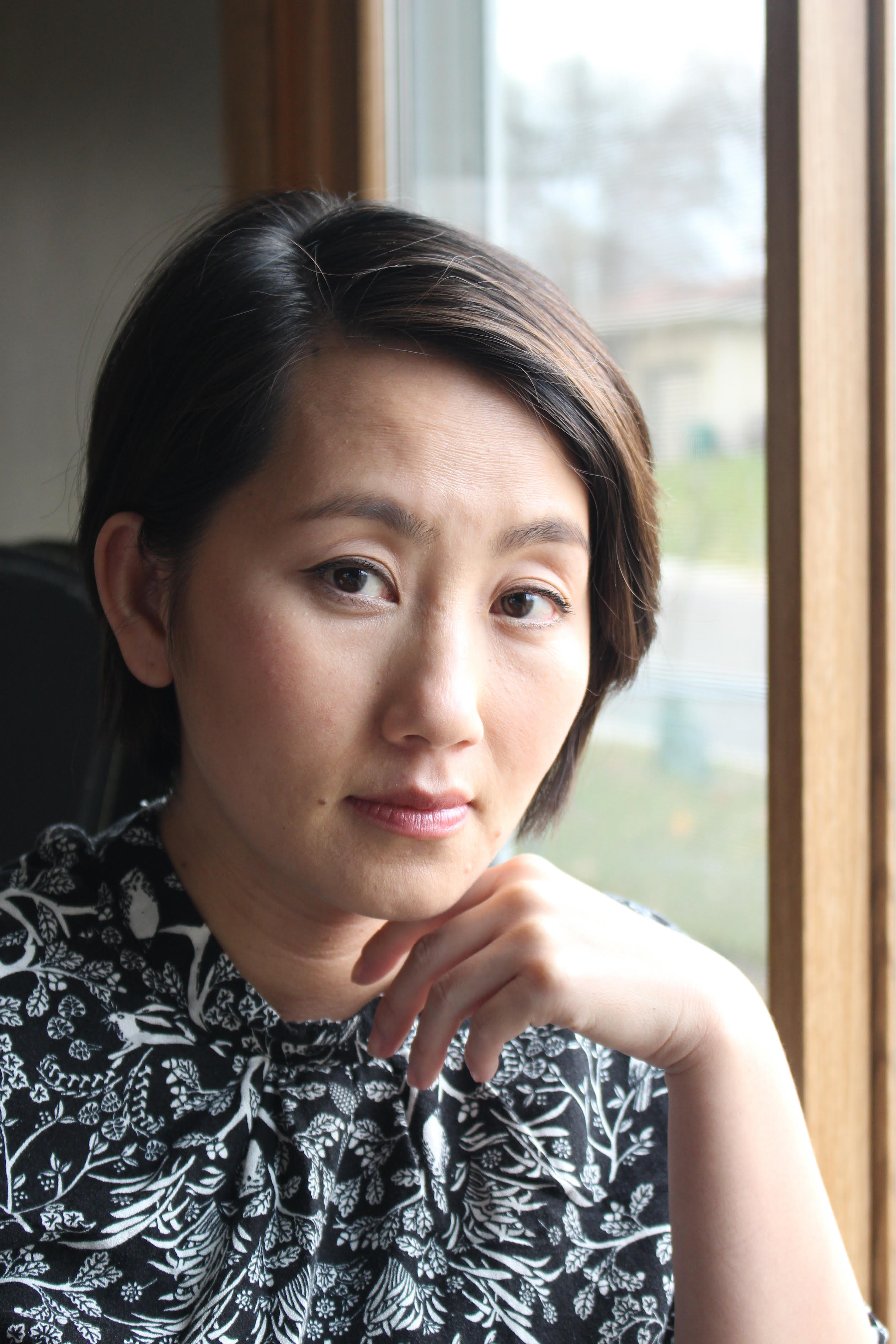The Latehomecomer

Overview
Kao Kalia Yang is a Hmong-American author, filmmaker, public speaker, and natural storyteller. The Latehomecomer: A Hmong Family Memoir (Coffee House Press, 2008) is the first memoir written by a Hmong-American to be published with national distribution. Driven to tell her family's story—and the story of the Hmong people—Yang wrote it as a "love letter" to her grandmother whose spirit held her family together through their imprisonment in Laos, their harrowing escape across the Mekong River and into a refugee camp in Thailand, their immigration to Minnesota when Yang was only six years old, and their transition to a hard life in America. "Yang has performed an important service in bringing readers the stories of a people whose history has been shamefully neglected," writes Kirkus. "Yang tells her family's story with grace; she narrates their struggles, beautifully weaving in Hmong folklore and culture. By the end of this moving, unforgettable book, when Yang describes the death of her beloved grandmother, readers will delight at how intimately they have become part of this formerly ... [unfamiliar] culture" (Publishers Weekly, starred review).
"What happened to the Hmong happened before us and will happen again after us. It is one group and then another." —from The Latehomecomer
Introduction
"The people say that once you take down the shacks and once the grass grows in that it's over, but wars don't end... not in the hearts and minds of those who really lost something." — Kao Kalia Yang in a videotaped interview at Prairie Lights Books in Iowa City
The Hmong people—pronounced with a silent H—make up an Asian ethnic group with a rich culture, art, language, and sense of family. During the Vietnam War and Laotian Civil War, the U.S. recruited more than 30,000 Hmong men and boys in the mountain region of Laos to fight alongside Americans in what became known as the "Secret War." When the Americans left the region in 1975, Lao soldiers and their North Vietnamese allies infiltrated Hmong villages and began a systematic campaign to kill off the Hmong who remained. A third of the Hmong people died during the war, fighting alongside the Americans. Another third were slaughtered in the war's aftermath.
Kao Kalia Yang's The Latehomecomer: A Hmong Family Memoir (Coffee House Press, 2008) is the first memoir written by a Hmong-American to be published with national distribution. Driven to tell her family's story—and the story of the Hmong people—Yang wrote it as a "love letter" to her grandmother whose spirit held her family together through their imprisonment in Laos, their harrowing escape into Thailand's Ban Vinai Refugee Camp, their immigration to Minnesota when Yang was only six years old, and their transition to a hard life in America. "Yang has performed an important service in bringing readers the stories of a people whose history has been shamefully neglected" (Kirkus Reviews).
Edited down to 270 pages from more than 1,000, the book is peppered with family photographs and split into four sections. The first section is a gripping account of Yang's family in the Laotian jungle, where her mother and father met and were married. They had been scavenging for food and living in makeshift shelters for three years, coping with sickness, gnawing hunger, fatigue, bombs falling from the sky, and the fear of approaching soldiers. Her mother, Chou Moua, was 16 and, before the war, had been attending school and had dreams of becoming a nurse. Yang's father, Bee Yang, was 19 and the youngest of nine surviving children whose father had died when Bee was young. His mother, Youa Lee—Kao Kalia Yang's grandmother—was a resourceful shaman and medicine woman. They were ambushed when Yang's mother was pregnant with her sister, Dawb. The men fled; the women and children were taken to an occupied village where Dawb was born. On a dark night in 1979, the men came back and the families escaped to the banks of the Mekong River for a perilous crossing to Thailand. Shortly after their journey, Thailand stopped taking refugees and began massacring those who tried to flee Laos.
The family was taken to the Ban Vinai Refugee camp in one of the poorest regions of Thailand, where they lived for seven years and where Yang was born. Covering less than a square mile, the dusty camp was the temporary home of roughly 40,000 Hmong refugees between 1980 and 1987. While the children played, adults tried to fight off illness, disease, nightmares, abuse from Thai soldiers, and suicide. "All I have to do is close my eyes and I see the dry grass surrounding the camp," says Yang. "I see the little children playing in the dirt, the hungry dogs..., my mom and dad, young like they were then, waiting in the dust for some future to begin."
In the final sections, Yang describes her family's move into a transition camp and then, with thousands of other Hmong families, to St. Paul, Minnesota, where she spent the rest of her childhood. Placed in the first low-income housing units in the state, Yang remembers wanting to be invisible as they endured stares and people yelling for them to go home. Yang eventually moved into, and out of, a house she describes as haunted by the ghost of a boy who died there. And she describes the challenges of school with her sister, speaking infrequently but learning to write. At the end of the memoir, Yang graduates college and begins her book, and says goodbye to her beloved grandmother amidst an elaborate and loving funeral. "To this day, if something happens and I get scared, I speak to her," says Yang (The Conversant).
Winner of a PEN USA Literary Award for Nonfiction and Minnesota's Book Award and Readers Choice Award, The Latehomecomer takes its name from a short story by Canadian writer Mavis Gallant and references Jews who returned home from internment hoping to find homes that no longer exist. "It wasn't until the 1950s that a Hmong written language was taught and used. It's a new medium for us," Yang explains. "To say that we're going to go into this thing that's literature, and that it will last longer than the newspaper, or the TV—it's kind of incredible. Especially for me." Asked how long it took to write the book, Yang answered four years, but "centuries and centuries to do the living" (Mn Artists).
- The prologue to The Latehomecomer offers a glimpse of what it means to Yang to be Hmong, in many ways summarizing the story about to unfold. Why do you think Yang begins this way? Why do you think she wrote the prologue in third person when the rest of the memoir is written in first person?
- Part one begins with a description of “the biggest covert operation in CIA history” (p. 7) known as “The Secret War” and its devastating aftermath in 1975. Were you familiar with the involvement of the Hmong people in the Vietnam War before you read the book? In what ways can a memoir go beyond mere documentation to expand our understanding of a chapter of American history?
- How does Yang describe her parents when they meet, and in what ways do they change throughout the book? Is their story a love story? How does Yang talk about love?
- When the Yang family crosses the Mekong River, they're forced to leave their family photos behind. What belongings carry meaning in The Latehomecomer? What objects would you hope to hang onto through such a journey?
- In what ways is storytelling important to Yang and in Hmong culture? What can be lost when a story best known in the oral tradition is written down? How does Yang navigate this transition?
- “I used to ask all the adults in my life where home was because they kept telling me that Ban Vinai Camp wasn't my home,” Yang told the NEA. What are some of the ways the Hmong establish a sense of home without a written language and “home” country? How do you define “home”?
- What surprised you about Yang's experiences living in a refugee camp?
- Yang describes the strong bond she feels with her siblings, her parents, her grandmother, and the rest of her extended family. How do these bonds define, support, and/or challenge her? How do the familial bonds in your life define, support, and/or challenge you?
- Of the many reasons Yang's grandmother provides for not wanting to leave the refugee camp and relocate to America (pgs. 78-80), which one most resonates with you? What do you think she is most afraid of?
- What did Yang and her family have to learn about America in order to emigrate? What do you think it would be helpful for newcomers like Yang and her family to know before they arrive?
- Tens of thousands of Hmong refugees moved to California, Wisconsin, and Minnesota in the 1980s and 90s. How does Yang describe the ways her family was treated? What measures do they take to both fit in and stay invisible?
- “The only way to live in America was to learn of its possibilities, and the way to do that was school,” Yang writes, paraphrasing her father's attitude (p. 139). What was the transition to school like for her and her sister, Dawb?
- The conditions in the camps were “hard for those who knew more than I did,” writes Yang, “but for me, the hardness in life began in America” (p. 151). Why? How does she regain her “voice,” as represented in both her native language and in English?
- The memoir's last section is devoted to descriptions of her grandmother and how the importance of honoring one's elders in Hmong culture. How does this compare to the ways elders are honored in other cultures?
- The book ends with sentiments of hope and determination directed at her family and her “Hmong brothers and sisters.” How are her “dreams” for them similar to or different from what you think of as the collective “American dream”?


